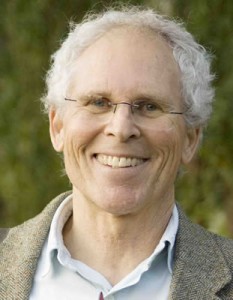
Reportedly, on average 3 million gallons of pollutants empty into Aliso Beach daily–rain or no rain. Motor oil, fertilizers, animal dung, and more contaminate this much-used public beach and the waterway that flows into it. Imagine the impact of this on public health; put more starkly, on the unprotected children who play at the mouth of our befouled watercourse. Many are too young to read and understand the permanent postings: “Warning: Runoff/Storm Drain Water May Cause Illness. Avoid Contact With Ponded Or Flowing Runoff And The Area Where Runoff Enters The Ocean.”
For decades, those using Aliso Beach have reported skin rashes, infections, and pink eye to county officials. Add to this the impact of urban runoff on the sea life in Laguna Beach’s Marine Protected Area. This is to say nothing about the noxious smell emanating from this toxic brew.
Anyone who has lived in Laguna Beach for decades probably knows that this news is neither fresh nor disputed. The Los Angeles Times ran some 19 articles on the mess at Aliso Beach and Aliso Creek from 1997-2006, and our local press has published many more during that time and since then. No one I know in town swims at Aliso Beach, most likely for the reasons just mentioned. In short, the problem of pollution at this beach has been chronic and seemingly intractable. Governmental agencies–including the Army Corps of Engineers, the Environmental Protection Agency, the County of Orange, and our own city council, among other bodies–have tried to make headway on a problem rooted in the rapid suburban development of South Orange County since the 1960s. Government alone–the so-called public sector–has not been able to clean up the extensive Aliso Creek watershed that reaches inland to the area around Cook’s Corner in the municipality of Lake Forest. The related problems of creek stabilization and riparian habitat restoration, meanwhile, remain. Cultural preservationists, like myself, want due care given to Acjachemem artifacts in the watershed.
The so-called “civic sector,” that is, groups of concerned citizens and individuals alike, similarly, has struggled with the Aliso Beach/Creek issue with few tangible results to show for their well-intentioned, Herculean efforts. To the credit of the Laguna Canyon Foundation large swaths of invasive Arundo donax, a bamboo-like plant that chokes the life out of native flora, are being painstakingly eradicated in the watershed.
Some elements of the private business sector in town in recent years supported an Army Corps of Engineers plan to build more than 20 drop-structure dams to contain creek overflows in wet seasons and stabilize the eroding streambed. However, the proposed $45 million project was suspended after citizens questioned the efficacy of concretizing segments of the creek while not adequately addressing the point source pollution originating from upstream cities.
All three of these stakeholder groups in Laguna Beach–the public, civic, and private sectors–are essential to solving the ongoing Aliso Creek problems. Somehow these groups must work in partnership for no single sector by itself will succeed.
Within the last year or so, I’ve seen a promising resumption of civic sector resolve to grapple with Aliso Creek matters. The Laguna Bluebelt Coalition, a recipient of our town’s Environmental Award in 2010, has been advocating for the city’s creation of a citizen-based Waste Water Task Force. Our City Council has been supportive. Presumably, such a group would craft a plan to improve the functioning of the Coastal Treatment Plant, possibly remove aging pipes in the creek bed, and provide recycled water. To participate on the task force, submit an application by Aug. 30 before 5 p.m. at City Hall.
My hope is that the task force will spark a broader, coordinated, joint effort from citizens, government, and businesses to frame a comprehensive approach for the clean-up and restoration of Aliso Creek and its environs. After all, it was the birthplace of Laguna Beach in the 1870s.
Tom Osborne, a recipient of Laguna Beach’s Environmental Award, is the author of recently published “Pacific Eldorado: A History of Greater California.”




